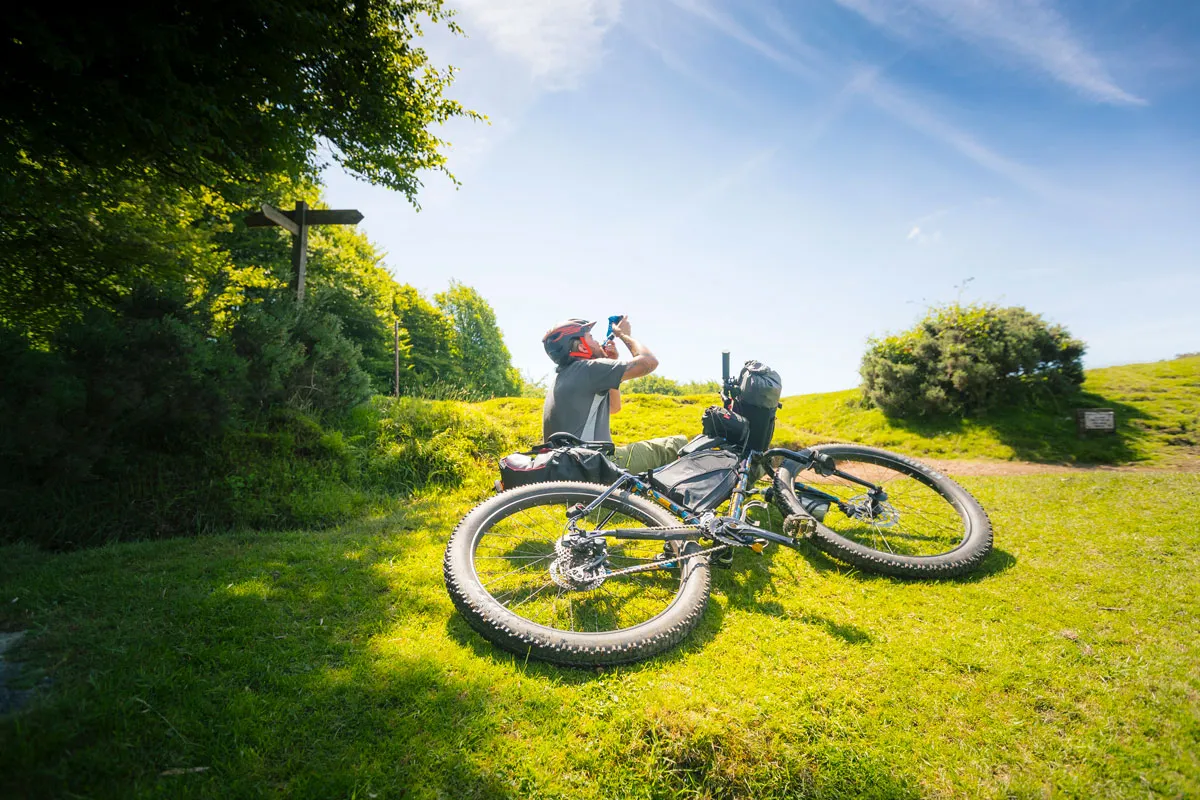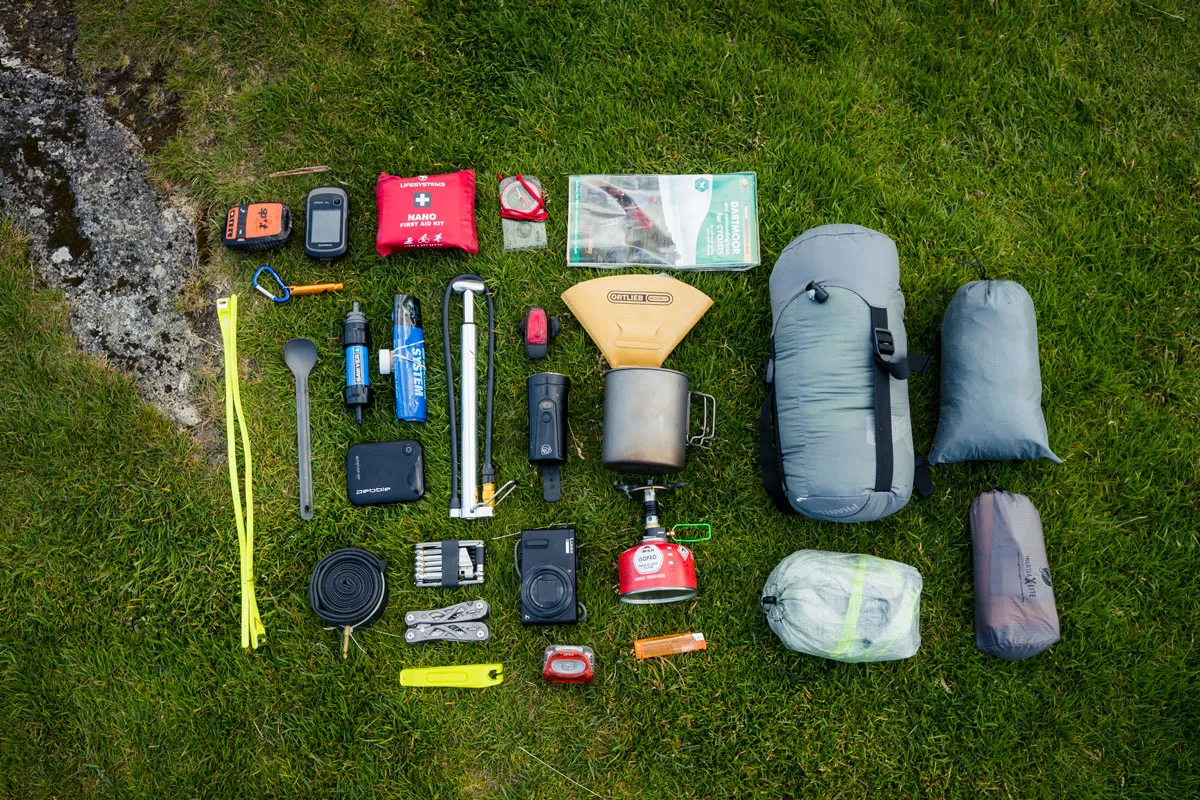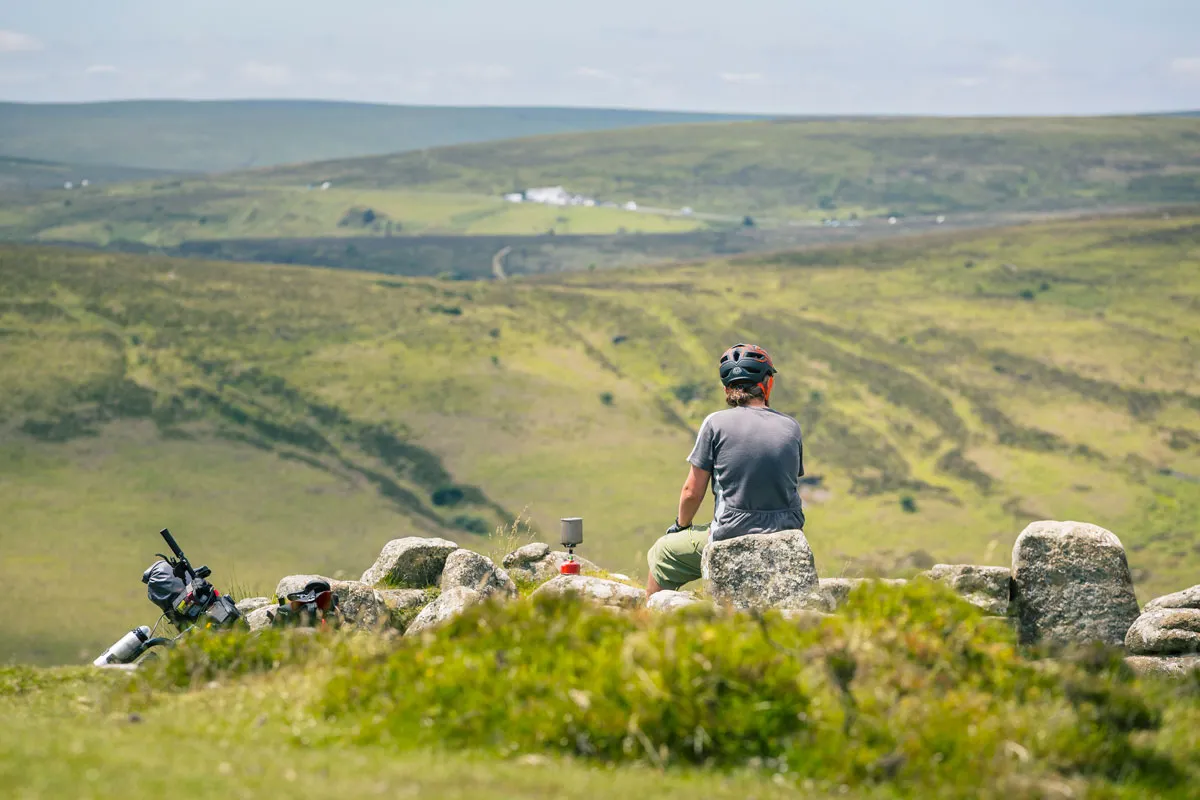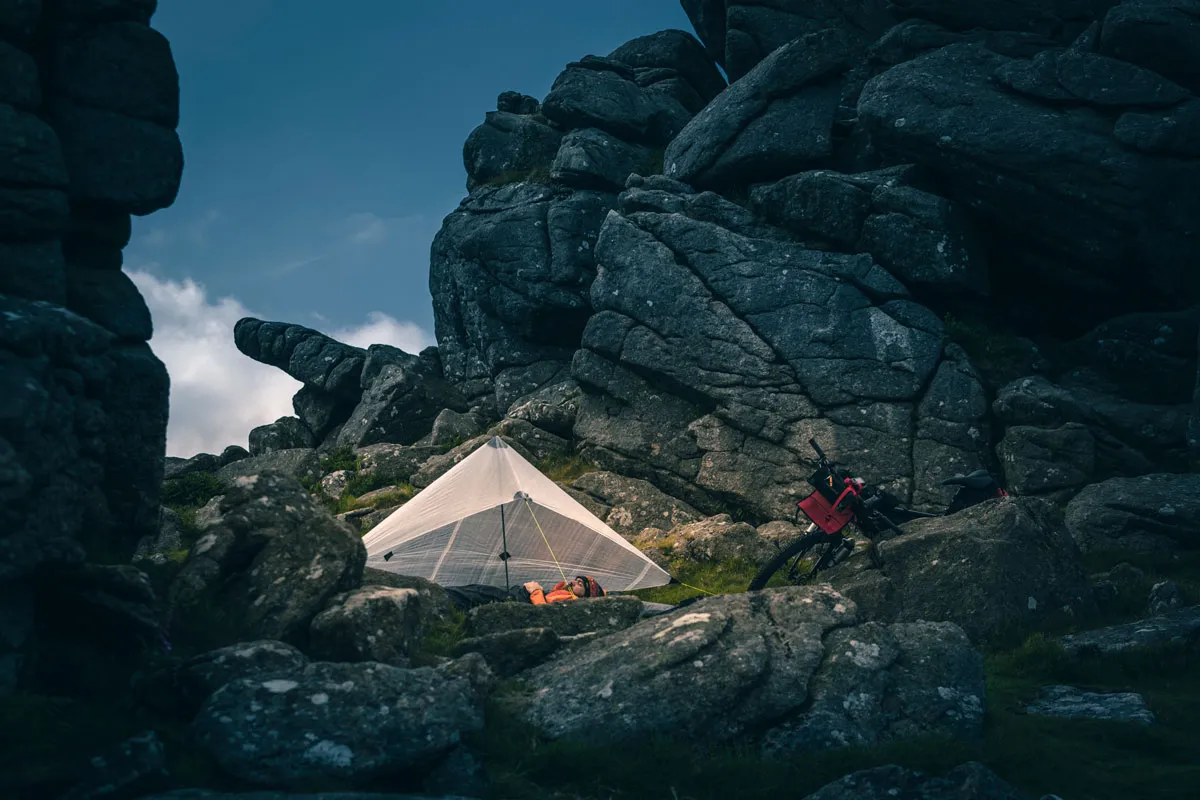Here are some of the key items I pack which should give a good foundation to what you will want to bring. Bear in mind that if you pack it you will be carrying it so prepare to be ruthless with your kit selections without ditching essential safety gear.
Striking a balance between the amount of gear you take for comfort off the bike and the weight this adds to your bike and its effect on the riding is something that you can hone over time. Investing in lighter and more compact kit can become a rewarding part of bike-packing as you shave grams here and there to optimise your kit list.
1. Bike
If you already own a mountain bike it is almost certainly capable of taking you on your first bike-packing adventure. As long as your brakes and gears are tuned and in good working order there is no reason rush out and buy a specialist new bike. It’s never a bad idea to invest in a good quality bike in the long term and you will find many advantages with this thanks to modern, comfortable frame geometry, additional bottle mounts and suitably low gearing, which will allow you to ride further and longer. If you are looking of a new bike, though, this is one I would recommend.

The latest version of Genesis’s much loved Longitude bike makes the most of a combination of wide rims and plus-sized tyres for comfort and control. The Shimano 2x10 drivetrain has a generous enough spread of gears for fully laden riding and hydraulic disc brakes give reliable stopping power. Great as it is, out of the box, and massively customizable, this is a great value option for anyone looking to get their first dedicated adventure bike.
2. Frame bags
The main difference between bike-packing bags and traditional cycle touring panniers are that they don't rely on eyelets for racks. Simple velcro and webbing fastenings are all that is needed to carry everything you need for a night away or a trip around the world.
The three main types of bags you will need to get started will be a frame bag, which sits within the front triangle of your bike frame. This is ideal for heavier items, and keeps the weight low on the bike, making for a more stable ride. A seat pack, which sits just below your saddle, is perfect for spare clothes and food. Strap it tight and make sure it doesn't swing from side to side as this can unbalance you on tricky terrain. Finally, a handlebar rollbag attaches to your bars and is a great space to carry light but bulky items such as sleeping bags and tents. It is designed to avoid brakes and gears and should work with most suspension forks. There are also various smaller pouches and bags which can be ideal for stashing snacks and gadgets so they are always within easy reach.
Tough and very water resistant, Blackburn’s range of bike-packing bags is a great off the shelf option, which will fit most bikes. They are easy to install and have an abundance of pockets for all your gear. The expandable frame-bag is versatile and will swallow everything you need for a few nights away.
3. Safety and navigation
Staying safe is always key, especially when you are riding alone. Make sure you are prepared and able to get yourself out of any potentially tricky situations. I’ll always pack backup navigation gear in case of GPS failure and make sure that first aid kits are well stocked.
When riding on shared paths it is important to make your presence known to other users. The Timber! Bell is a great friendly way to announce your presence. Simply flick the switch down to activate the cow-bell style bell which jangles away as you pass over rough terrain.
When riding alone and especially in remote areas help can be a long way away. I always use a Spot tracker to let family and friends know where I am at all times. It has the ability to send pre-programmed messages without the need of a phone signal and an emergency beacon if things go really bad, summoning the most relevant emergency rescue service straight to your location. This really could save your life.

Other kit:
- First aid kit
- Compass
- Map
- Emergency whistle
- Lightweight lock
- Sawyer water filter, £62.03
- Power Bar recharging unit
4. Tools
You shouldn't need to pack enough tools to give your bike a complete overhaul mid ride, but should make sure that you have all the essentials to get you back to civilisation. Always pack these in easy to access places and make sure you understand rudimentary bike repair. Changing a tube in a howling gale and pouring rain is not an ideal learning environment.
- Pump
- Multitool (with chain tool included)
- Gerber multitool (with knife and pliers), from £11.69
- Tyre levers
- Front and rear lights
- Head torch
- Spare inner tube

5. Cooking
Realistically, solo cooking is just boiling water to use in your dehydrated meal, boil in the bag, noodles or coffee. If you can get a combination of items that pack together to save space and weight you will be grateful for it. I’ll always find a way to make a great cup of coffee in the morning and Ortlieb's collapsible filter is the most packable way I’ve found yet.
- Titanium mug/kettle
- Lightweight stove
- Lighter
- Ortlieb collapsible coffee filter, £9
6. Sleep and Camp
Getting a good night's sleep is one of the most important parts of bike-packing. If you feel more comfortable in a small tent then go with that. I sleep well with a tent and tarp combo and if the weather is nice enough, nothing beats ditching the tarp for a night under the stars.
- Sleeping bag
- Bivi bag
- Tarp
- Sleeping mat
- Compact camera

Matt Orton is Mountain Biking UK’s deputy art editor and is always up for a bit of adventure. At home hiking, biking and canoeing through the UK’s wild places he isn't afraid to rough it.
Read about Matt's bike-packing quest
Image credit: Russell Burton
